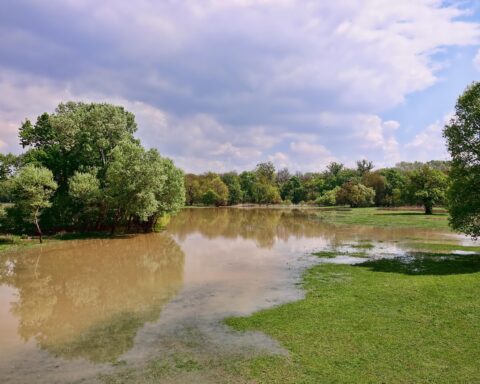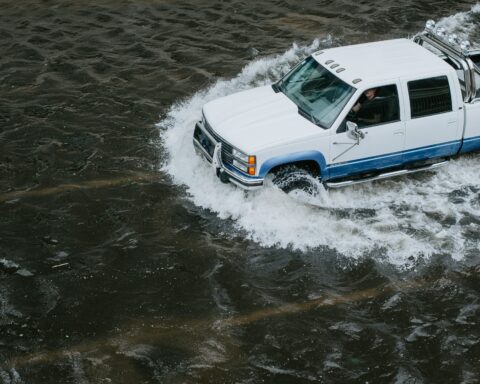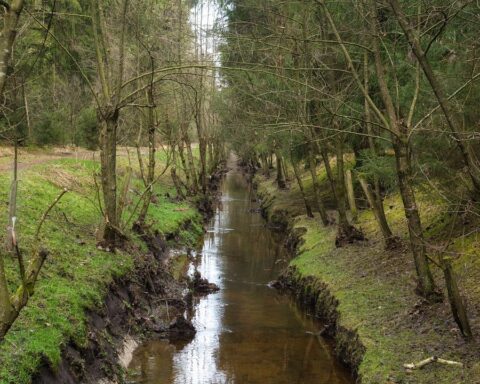Lake Erie is the smallest of the Great Lakes, but it has become the most digitally connected freshwater lake on Earth.
Since 2020, the 9,940-square-mile lake has been dotted with a network of sensors – or smart buoys – set up by the Cleveland Water Alliance (CWA), a nonprofit organization that focuses on economic development driven by the Great Lakes.
The network, which has seen $10 million in investment so far, boasts over 200 sensors covering 12,000 square miles, including open water and river locations as well as inland ponds, creeks and streams.
It has multiple uses, including water-quality monitoring, a weather warning system, and it produces data that can be used for disaster response and recreational updates.

Although monitoring Lake Erie’s watershed has environmental benefits, the network was not necessarily set up for green reasons. Instead, the other green – economic development – was the primary motivation.
“We’re not a sustainability organization. Now, obviously, we want to know about our lake and want to empower these water-management entities with the best data possible to help conserve our lake,” CWA communications manager Samantha Martin told Government Market News. “That is absolutely a piece of what we do, but our main focus is on the water economy.”
CWA, the city’s water utility – called Cleveland Water – and regional municipalities that face the lake worked together to develop the network, which is officially called the “Smart Lake Erie Watershed.”
“The network started out as trying to create a ‘data as a service model’ program to provide (city and county government organizations) data and for them to make water-management decisions from that data, “Martin said.
Officials with the alliance and their partners soon realized every smart buoy they launched essentially needed its own cellphone line to relay the data, Martin said.
“So, we took a step back and started weighing out the opportunity cost here, and we realized that if we build a telecommunications network, not only can we utilize it – it adds data as a service model for partners like Cleveland Water – but we can provide data almost like a public utility in and of itself,” Martin said. “We can essentially create a sandbox for (companies and startups) who are creating water technologies … to test and trial. They can offer their technologies in a real-world environment, which is a much-needed opportunity and a big barrier for these folks to get their technologies to market.”
In late 2020, the U.S. Economic Development Administration seeded the network with a $600,000 grant.
“That was kind of the first big boost we needed to get this going,” Martin said. “It was a matching grant and we started building out the infrastructure and started collecting data and folks got really excited.”
Soon afterward, CWA secured additional funding from the state of Ohio and federal funding from the American Rescue Plan Act of 2021 with help from Cuyahoga County.
“And now, we’ve built out a telecommunications backbone that covers over 6,500 square miles of the lake in the watershed,” Martin said.
The network typically functions in the warm-weather months. The alliance takes the buoys out in winter when Lake Erie freezes.
Organizations that use the data from the network range from water sports and fishing enthusiasts, Cleveland Water and the U.S. Coast Guard.
To fund the network, Cleveland Water and other organizations pay CWA for data. The alliance uses that money to deploy and maintain the network.
“These buoys are very, very expensive – tens of thousands of dollars each – and they take a lot to calibrate and deploy and maintain.” Martin said. “We have contractors that are out there doing this work.”
The alliance is also working with a local high school that specializes in maritime careers to train students to maintain and deploy the buoys.
As for what’s next for the CWA’s network, Martin anticipates the organization will continue to get state and regional funding because of the increasing global scarcity of freshwater – the Great Lakes hold 21% of the world’s freshwater supply.
“Migration is happening, it’s not a matter of if, and it’s going to pick up from a water scarce environment,” Martin said. “Companies who need a lot of water, we call them water intensive-businesses, are relocating to more water-rich areas like the Great Lakes and so Cuyahoga County and the state of Ohio.
The network will play a big part in attracting those businesses to the region, Martin said.
“We’re working closely with them to attract water-intensive businesses and bring them here, and we’re also building out an industrial testbed where these folks that are relocating here can utilize technology specifically for industrial water monitoring and water usage,” she said.
All news and information on this site is provided by the team at Strategic Partnerships, Inc. Check out this short 1-minute video that provides a quick overview of how we work with clients.










